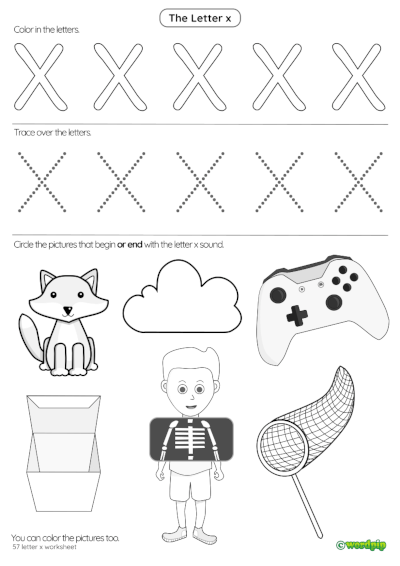Letter X is a unique letter in the alphabet that can sometimes be tricky for young learners to recognize and write. However, with the help of engaging worksheets, children can practice tracing, writing, and identifying the letter X in a fun and interactive way.
Letter X worksheets typically include activities such as coloring, tracing, matching, and even finding words that begin with the letter X. These worksheets are designed to improve fine motor skills, letter recognition, and handwriting skills in young children.
One common exercise on a letter X worksheet is tracing the letter X both in uppercase and lowercase. This helps children become familiar with the shape of the letter and practice writing it correctly. Additionally, worksheets may include pictures of objects that start with the letter X, such as xylophone, xenops, or x-ray, to reinforce letter sound recognition.
Another activity that can be found on a letter X worksheet is matching uppercase and lowercase letters. This helps children understand the relationship between capital and lowercase letters and reinforces their knowledge of the letter X in both forms. Additionally, worksheets may include simple word puzzles or fill-in-the-blank exercises to further challenge young learners.
Some letter X worksheets may also incorporate coloring activities, where children can color pictures of objects that start with the letter X. This not only reinforces letter sound recognition but also allows children to practice their creativity and fine motor skills. Overall, letter X worksheets provide a comprehensive learning experience for children to master the letter X in a fun and engaging way.
In conclusion, letter X worksheets are valuable tools for teaching young children how to recognize, write, and understand the letter X. By incorporating various activities such as tracing, matching, and coloring, these worksheets help children develop essential skills while having fun. Whether used in the classroom or at home, letter X worksheets are a great resource for supporting early literacy development in young learners.
